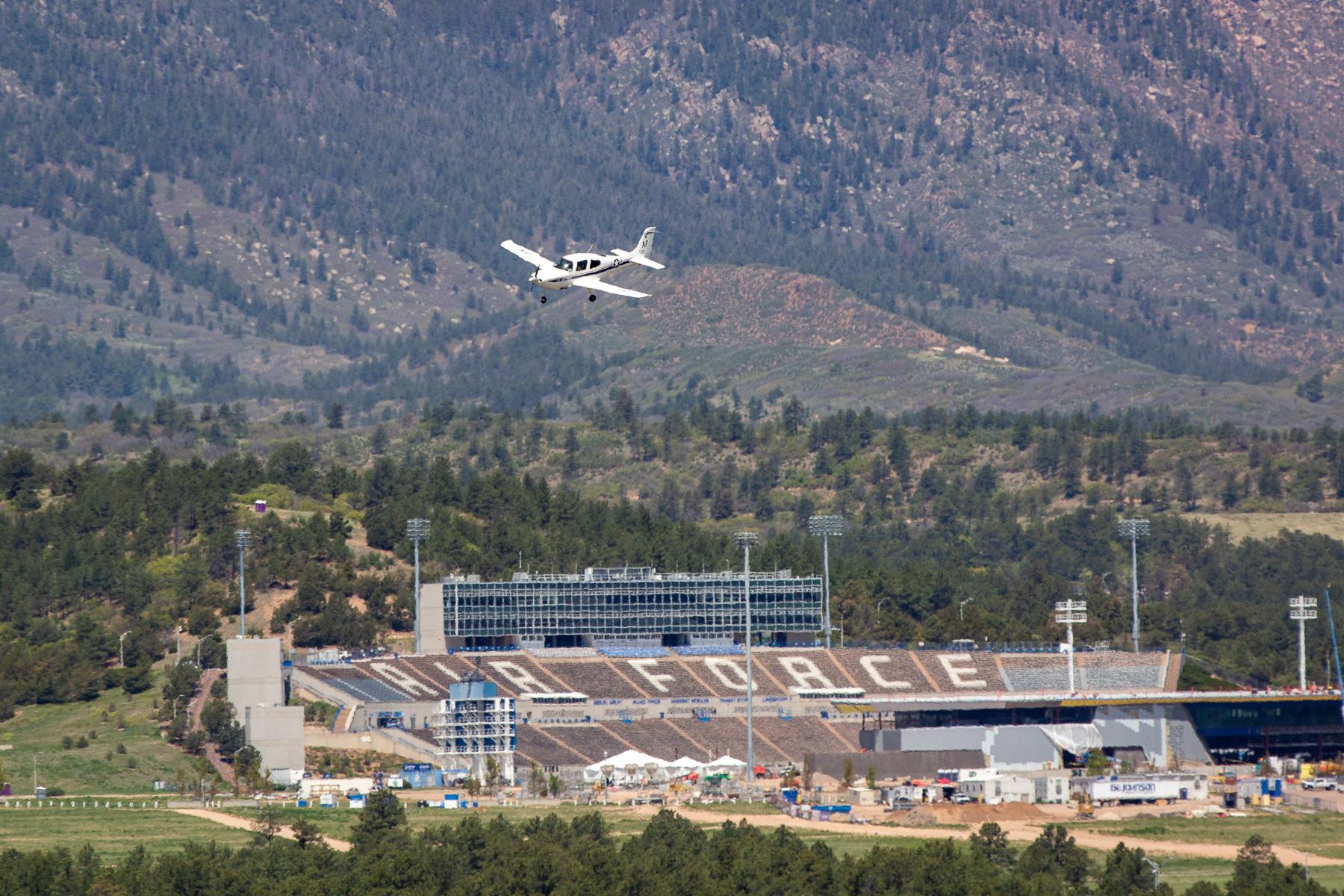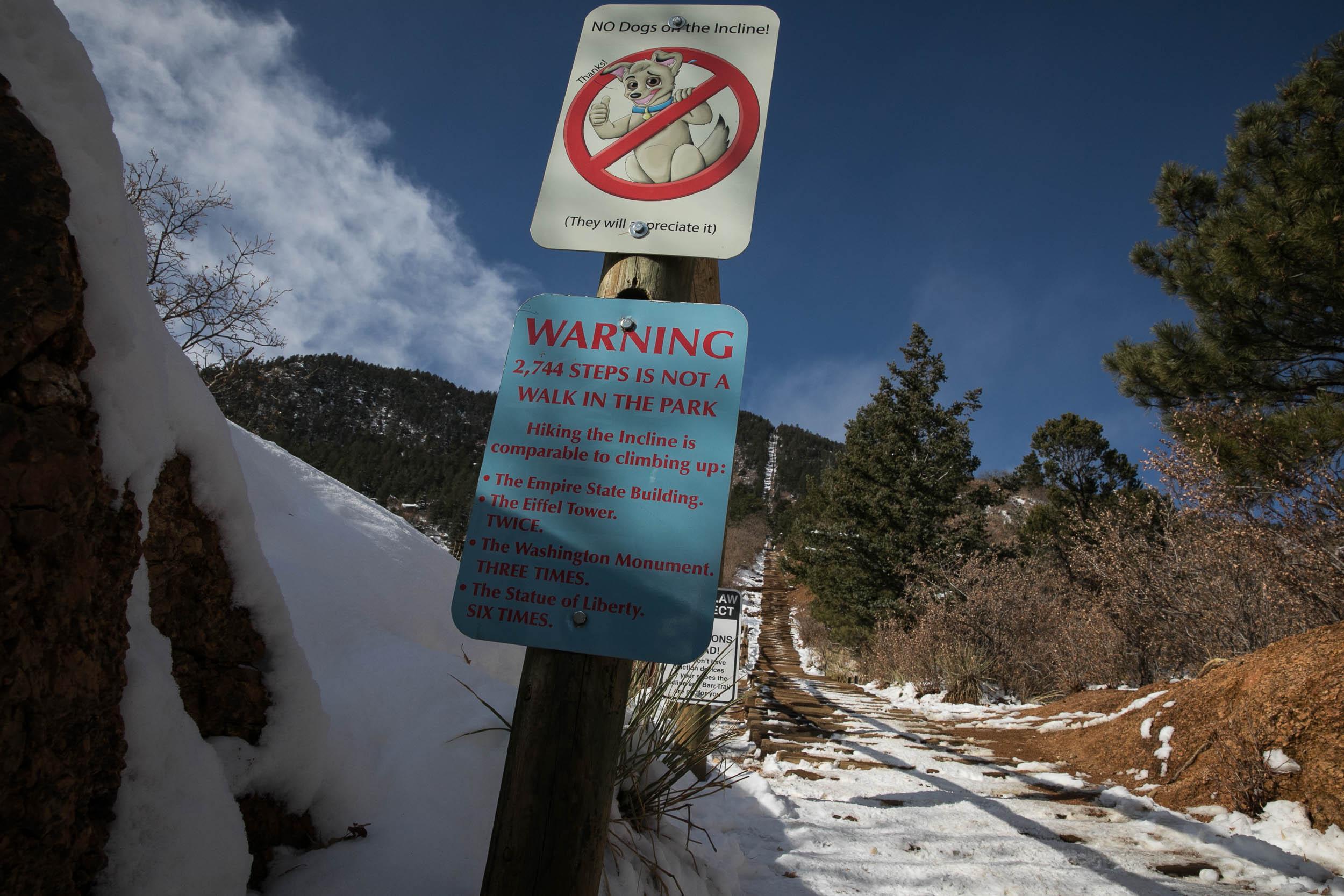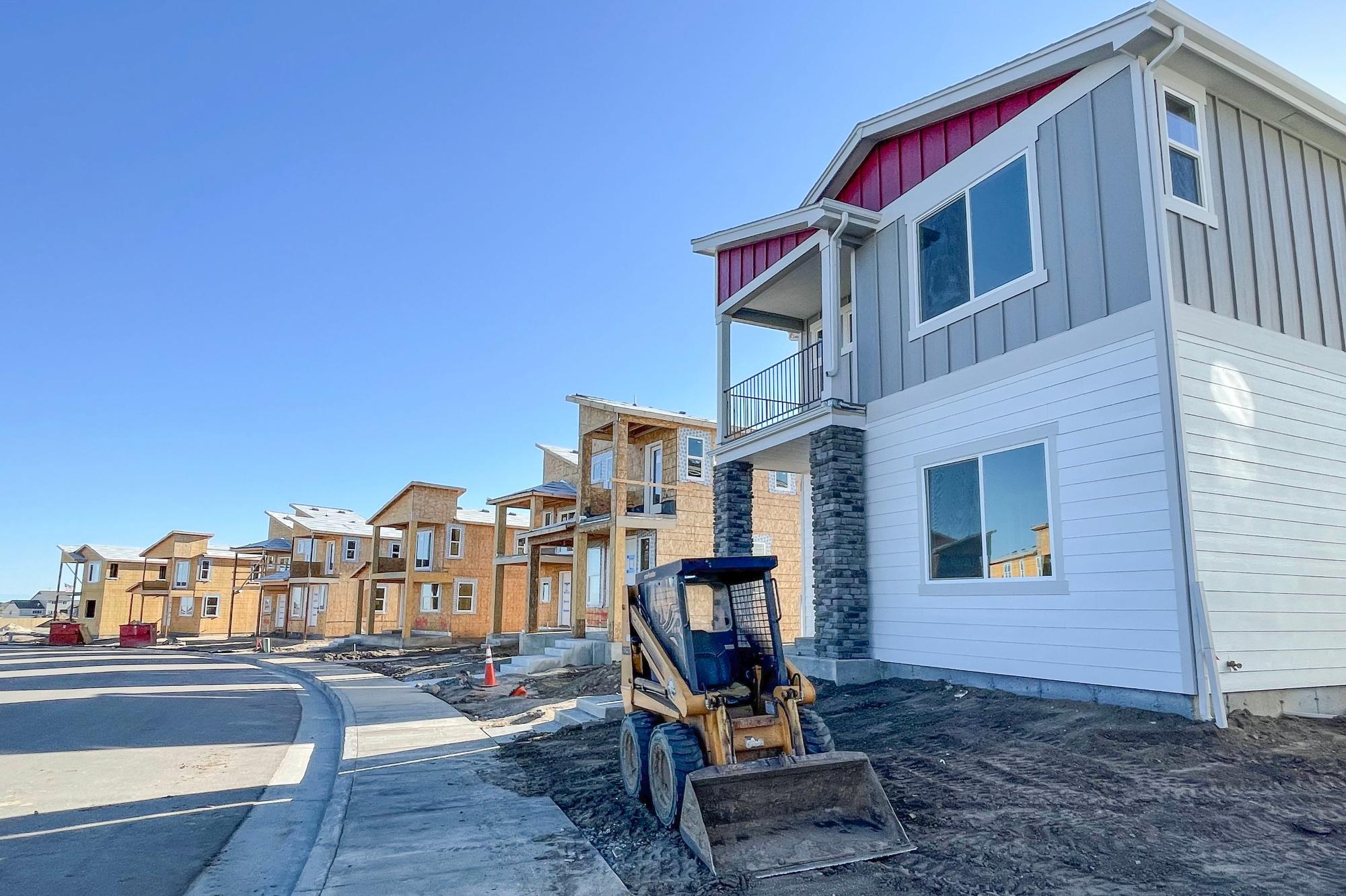
On the east side of Colorado Springs, flags and billboards line the roads advertising ‘HOMES FOR SALE! TURN HERE!’ Hundreds of homes are under construction in recently built subdivisions.
Each of these new homes require water — a hot commodity in the West for property developers. In a Colorado Springs neighborhood still under construction, a sprinkler waters the new lawn of a townhouse that’s only a plywood shell, still without siding or a roof.
Colorado Springs is one of the fastest growing regions in the state. Homes are getting more expensive and harder to buy. The boom is expanding into nearby cities — and the pressure is building.
“We've had just a flood of new applications come into our planning department,” said Dan Blankenship, utilities director for the City of Fountain in El Paso County. “I think it's not unfair to characterize this as an explosion.”
There are currently fewer than 9,000 taps, or connections, to Fountain’s water supply. Over the last year, Blankenship said developers have applied for nearly 30,000 new taps to the city’s water system.
Blankenship is telling developers, Fountain is tapped out.
“The bottom line is, we can't give you something that we don't have,” Blankenship said.
To support that many new taps, the city would need to buy additional rights to use more water. They would also need a place to store that water, and the city would need to treat it and find a way to get it to homes.
That’s getting harder to make happen in a state like Colorado, where most of the people live on the Front Range but most of the water is on the Western Slope.
“You have to bring the water from far away. And it keeps getting further and further. And so the further it goes, and the longer it goes, the more expensive it is,” Blankenship said.
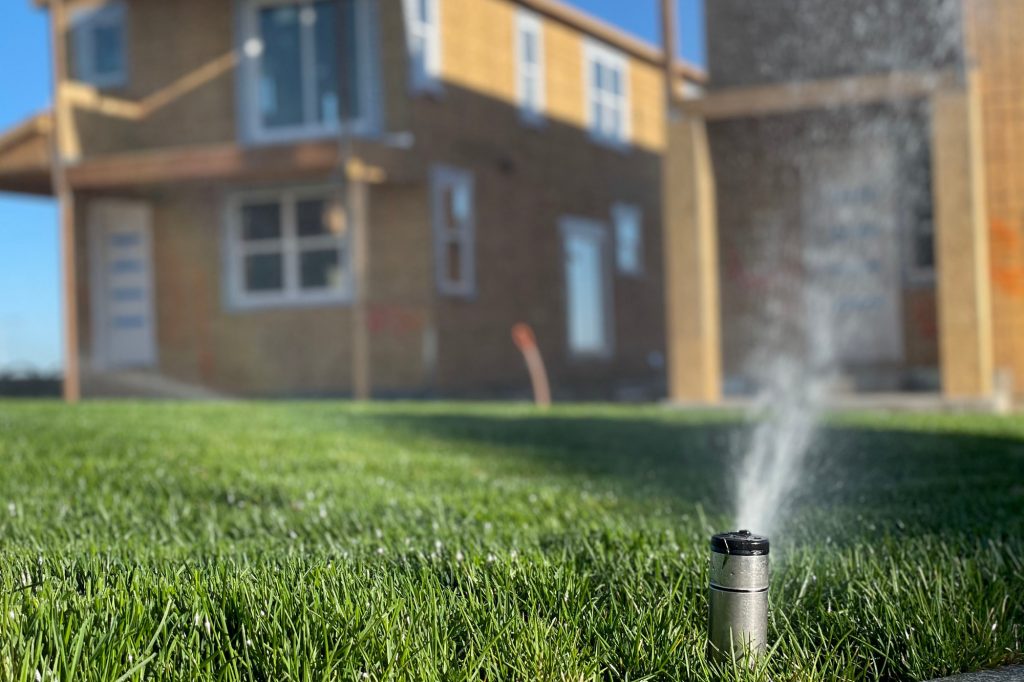
Where the city of Fountain gets its water from
Fountain gets most of its water from the Pueblo Reservoir, which is filled with water that would otherwise end up in the Colorado River. The reservoir project was built in the 1970s. It’s unlikely the city would be able to build something similar today, Blankenship said. It's a lot tougher to do that now, just because of the environmental concerns.
Climate change and worsening drought and streamflows are diminishing flows into the Colorado River. Proposals to divert water long distances and across mountains can face decades of legal battles from environmental groups, and water storage projects aren’t being built at the pace they once were.
“Recently we were informed that [Fountain] didn't have available water taps, and so it kind of put our project on the back burner down there,” said Scott Smith, the vice president of land for Oakwood Homes, which owns a piece of land in Fountain.
- The Front Range May Have Gotten Soaked, But Half Of Denver’s Water Supply Comes From The Drought-Stricken Western Slope
- Dry Soils And Drought Mean Even Normal Snowpack Can’t Keep Up With Climate Change In The West
- If Lake Powell’s Water Levels Keep Falling, A Multi-State Reservoir Release May Be Needed
Smith said it’s becoming more common for developers to have to secure water rights and pay for additional water infrastructure if they want to build a big project.
But he said the situation in Fountain is unusual.
“Usually you don't have a municipality that says, ‘Oh, you know, the development community is going to have to get together and figure it out.’”
Fountain hasn’t finalized any plans yet, but they say developers are going to need to help pay the millions of dollars to buy those new water rights, reservoirs, and pipes needed to support that kind of growth. Blankenship, Fountain’s utility director, said instead of the city paying for that upfront, he wants to shift that cost to developers.
“We are looking to those who are going to benefit from bringing the water and the infrastructure to pay the cost of bringing that water and infrastructure,” he said.
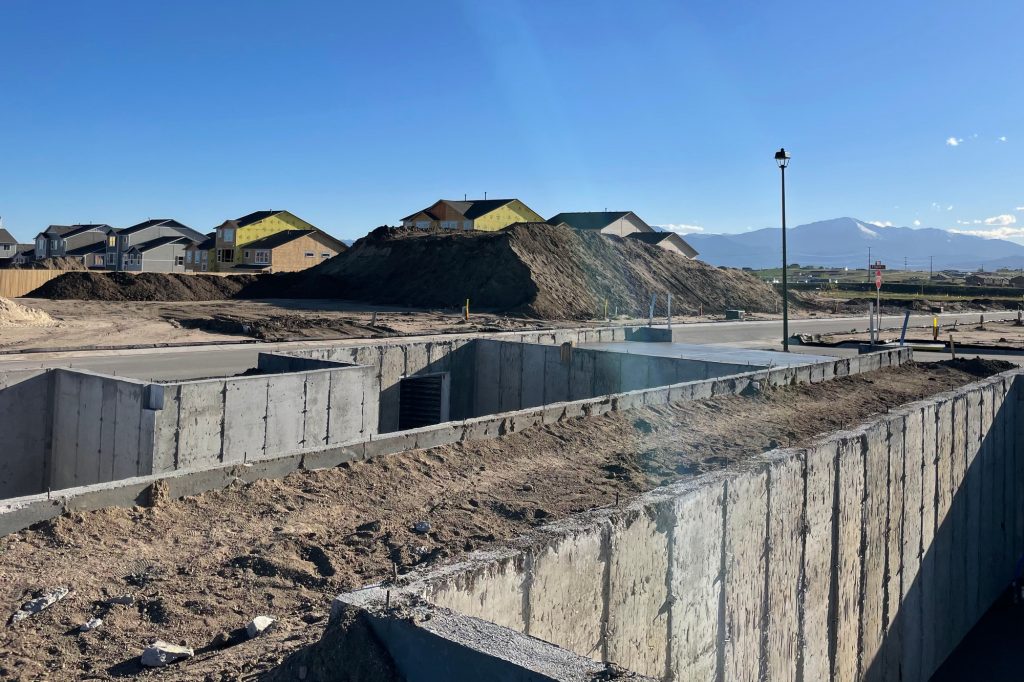
“Everybody knows in Colorado that the number one resource question is water allocation.”
No matter how a developer might have to secure water for a new project, the cost will get rolled into the price of a new home, said Kevin Walker, with the housing and building association in Colorado Springs.
“Everybody knows in Colorado that the number one resource question is water allocation,” Walker said. “Millions and millions of dollars and hundreds and hundreds of people work on it every day.”
Walker doesn’t believe the situation in Fountain is something developers need to worry about happening elsewhere. Kevin Reidy, a senior water conservation specialist with the Colorado Water Conservation Board, said other water utilities are also worried about how to keep up with growth. Fountain is just the first to talk so openly about the issue.
“We are entering a new era, and we are going to have to be more open on this stuff,” Reidy said. “And I think we're going to see a lot more of this pressure happening.”
A big part of Reidy’s job is to get water and land planners to work together, which he said have been too siloed. Reidy helps host training events to get water and land people in the same room to talk about these issues.
“I think we're kind of hitting that point where people are kind of saying, ‘Okay wow, we've got to do things differently,’” Reidy said.
For Fountain, that means telling developers this town doesn’t have the water you need. If you want to build here, you’ll have to bring your own.



